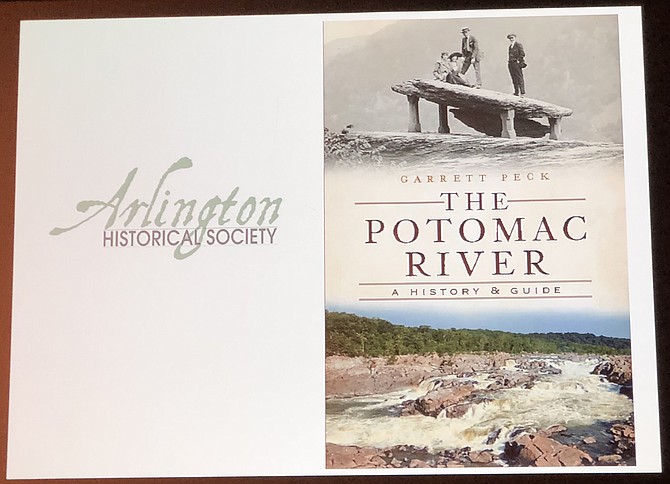Marymount University’s Reinsch Library Auditorium swelled to 132 people on Jan. 10 as author and speaker Garrett Peck submersed the audience in his book, “The Potomac River: A History and Guide.” There are few metropolitan areas that have a river flowing through them, and the book is meant to get people out on the river, all 384 miles of it.
The name “Potomac” means “meeting place” and comes from the Native Americans who used the river to hunt and fish, said Peck. However, all that remained from the native peoples was the name; they were largely wiped out by the Europeans thanks to smallpox and other viruses, says Peck.
The Potomac was utilized in Revolutionary War, the Civil War and became especially famous as part of John Brown’s Raid, which was the catalytic moment that led to the Civil War and thus the end of slavery. The Potomac became the boundary for the union and the confederacy and many battles were fought along the river, including the bloodiest day in American history: The Battle of Antietam, in which 23,000 soldiers died.
Today, the river is the lifeblood of the Washington Aqueduct and provides clean water to approximately one million citizens living, working, or visiting in the District of Columbia, Arlington and Fairfax County, and the City of Falls Church; it pumps out an average of 155 million gallons of water per day.
However, the river has a history of flooding and the U.S. Army Corp of Engineers states that in 1939 the Potomac Park Levee System was congressionally authorized to provide flood risk reduction for a flood event up to 700,000 cubic feet per second (cfs) on the Potomac River. Originally, the levee was constructed of sandbags and earthen fill to form a temporary closure across 17th Street. Today, the Park Service has reconstructed the levee and in the event of high water, the removable structure can be erected 17th Street NW south of Constitution Avenue NW to reduce flood risk to human safety and critical infrastructure downtown and in southwest parts of the district from flooding of the Potomac River.
Arlingtonians took an interest in more than just history and asked Peck questions about the health of the river and what can be done to improve it. For people who are interested in helping, he suggests going online to the Potomac Riverkeeper Network: www.potomacriverkeepernetwork.org.
The river is not just a source of water but also one of discussion and the first step in generating ideas for making the community a better place. Public Programs Manager for Arlington Historical Society (AHS) Annette Benbow, said: “We provide the story behind the story and once you understand community history then you become a better community.”
The AHS invites local authors and historians to speak at events 10 times a year and is sponsored by Marymount’s Department of History and Policy. Associate History Professor for Marymount University and Museum Director of AHS Mark Benbow, said, “Our purpose is to promote and preserve local history and get the public interested.” Events are held at Reinsch Library Auditorium every second Thursday of the month. The Arlington Historical Society is a non-profit organization funded solely by donations and membership dues. To help support them, and for more information, visit www.arlingtonhistoricalsociety.org.
